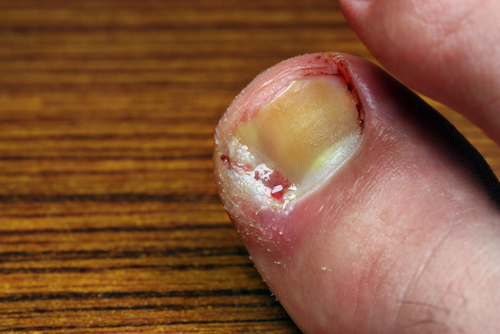Doctors for Nail infection in Pune
- Doctors for Nail infection in Pune

Nail Infection (paronychia)
Paronychia is nail inflammation that may result from trauma, irritation or infection. It can affect fingernails or toenails. Paronychia can develop when bacteria enter broken skin near the cuticle and nail fold, causing an infection. The cuticle is the skin at the base of the nail. The nail fold is where the skin and nail come together.
Healthcare providers treat paronychia with antibiotics to kill the infection. Providers may also drain pus (thick, infectious fluid that builds up around a wound). They may also culture the fluid to see what specific bacteria might be causing the infection.
Sometimes, the infection comes back or symptoms last for weeks (chronic paronychia). Chronic paronychia is more commonly caused by irritation from occupational or environmental exposures. Less often, it may be caused by a chronic bacterial or fungal infection.
Symptoms of a Paronychia
Symptoms of paronychia usually develop over several hours or days. Sometimes they take longer to develop. Symptoms appear where the nail meets the skin (the nail fold and cuticle). The sides of the nail can also be affected.
Paronychia symptoms include:
- Pain, swelling and tenderness around the nail.
- Skin that is red and warm to the touch.
- Pus that builds up under the skin. A white to yellow, pus-filled abscess may form. If an abscess forms, it may require antibiotics and/or drainage.
What Causes Paronychia?
Most commonly, infectious paronychia results from a staph infection. Staphylococcus aureus bacteria cause staph infections. Other bacteria (such as Streptococcus pyogenes) can also cause the infection. Bacteria get into the skin through:
- Cuts, broken skin or hangnails.
- Ingrown nails (this happens most often with ingrown toenails).
- Irritation from water or chemicals.
Trauma to the nailbed or cuticle area. Trauma can result from accidents, nail biting or frequent manicures or pedicures.
How is paronychia diagnosed?
Your provider will ask about your symptoms and do a physical exam. Healthcare providers usually don’t need to order tests to diagnose a nail infection. Occasionally, providers may take a sample of the tissue and send it to a lab to test for specific infectious causes such as bacteria or fungi. Rarely, if the infection is severe, imaging (such as an X-ray) may be ordered to check for involvement of the underlying bone.
Make An Appointment
Contact Us
- Sr. 353, Emerald Building, Parandwadi Road, Somatane Phata, Pune
- +91 77698 81188
- san55555@gmail.com

